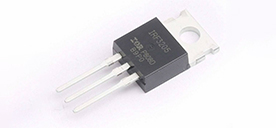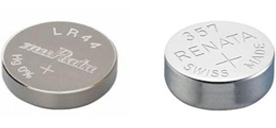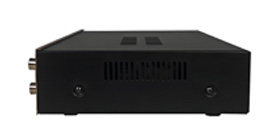Interpreting Modems: The Core of Communication Technology
2024/4/2 10:40:21
Views:
A modem, also known as "Modem", is the abbreviation of modulator and demodulator and is a type of computer hardware. Its main function is to convert analog signals and digital signals to realize remote transmission of information. Specifically, the role of the modulator is to convert the computer's digital signal into an analog signal that can be transmitted over the telephone line; while the demodulator converts the analog signal into a digital signal that the computer can understand. In this way, two computers can communicate through ordinary telephone lines or other media.
Modems can use different means to transmit analog signals, such as fiber optics, radio frequency radio, or telephone lines, depending on the application. In modern telecommunications transmission equipment, the function of a modem is to transmit information over long distances. Whether it is broadband data access, cable TV, ADSL, fiber optic modems, or even digital mobile phones, their core functions are inseparable from the modem's digital-to-analog conversion. In general, the modem is an indispensable and important device in the field of communications. It allows digital signals to be transmitted through analog signal lines, thereby realizing the remote transmission and exchange of information.
Data modulation is a core task of the modem. On the transmitting end, a modem converts the binary digital information produced by a digital device such as a computer into an analog signal suitable for transmission over an analog channel such as a telephone line, cable television line, or radio frequency channel. This process involves adjusting the frequency, amplitude or phase of the carrier signal to reflect changes in the original digital information. Common modulation methods include amplitude shift keying (ASK), frequency shift keying (FSK) and phase shift keying (PSK). and many other types.
On the receiving end, the modem performs the opposite operation - data demodulation. It recovers the original digital information from analog signals that may be interfered by noise due to transmission over analog channels. The demodulator detects and analyzes changes in the characteristic parameters of the signal to accurately restore the digital bit sequence carried by the original transmitter during modulation, ensuring the accuracy of the data.
The modem is also responsible for setting appropriate transmission rates according to different communication standards and protocols, and completing necessary protocol conversion work. For example, in the era of dial-up Internet access, a 56Kbps modem could compress and encode the high-speed data stream of the local computer and then transmit it at low speed through the traditional telephone line, and decompress and decode it at the receiving end. In broadband access technology, modems need to support higher transmission rates. For example, ADSL modems use more complex multiplexing and error correction coding technologies to improve data transmission efficiency.
The modem has line control capabilities and can automatically identify and configure the connection status, such as establishing a connection, keeping the connection stable, and disconnecting. In addition, they usually contain certain error detection and correction mechanisms, such as cyclic redundancy check (CRC) and other methods, to ensure that even if the data encounters some noise interference during the transmission process, data loss and errors can be minimized. .
In order to ensure that signals can be transmitted smoothly between different media, the modem also needs to complete the work of impedance matching, that is, adjusting the level and characteristics of the output signal to adapt to the requirements of various communication lines. At the same time, for long-distance transmission, the modem is also responsible for signal amplification, so that the signal strength is enough to traverse the long-distance transmission channel.
The main function of the modem is to build a bridge between the digital world and the analog world. It plays a vital role in data communications. Whether it is a traditional telephone line network or a modern high-speed broadband network, its role is indispensable. Short. With the development of communication technology, modem functions are constantly evolving and improving to meet the growing data transmission needs and rising performance standards.
Modems can use different means to transmit analog signals, such as fiber optics, radio frequency radio, or telephone lines, depending on the application. In modern telecommunications transmission equipment, the function of a modem is to transmit information over long distances. Whether it is broadband data access, cable TV, ADSL, fiber optic modems, or even digital mobile phones, their core functions are inseparable from the modem's digital-to-analog conversion. In general, the modem is an indispensable and important device in the field of communications. It allows digital signals to be transmitted through analog signal lines, thereby realizing the remote transmission and exchange of information.
Data modulation is a core task of the modem. On the transmitting end, a modem converts the binary digital information produced by a digital device such as a computer into an analog signal suitable for transmission over an analog channel such as a telephone line, cable television line, or radio frequency channel. This process involves adjusting the frequency, amplitude or phase of the carrier signal to reflect changes in the original digital information. Common modulation methods include amplitude shift keying (ASK), frequency shift keying (FSK) and phase shift keying (PSK). and many other types.
On the receiving end, the modem performs the opposite operation - data demodulation. It recovers the original digital information from analog signals that may be interfered by noise due to transmission over analog channels. The demodulator detects and analyzes changes in the characteristic parameters of the signal to accurately restore the digital bit sequence carried by the original transmitter during modulation, ensuring the accuracy of the data.
The modem is also responsible for setting appropriate transmission rates according to different communication standards and protocols, and completing necessary protocol conversion work. For example, in the era of dial-up Internet access, a 56Kbps modem could compress and encode the high-speed data stream of the local computer and then transmit it at low speed through the traditional telephone line, and decompress and decode it at the receiving end. In broadband access technology, modems need to support higher transmission rates. For example, ADSL modems use more complex multiplexing and error correction coding technologies to improve data transmission efficiency.
The modem has line control capabilities and can automatically identify and configure the connection status, such as establishing a connection, keeping the connection stable, and disconnecting. In addition, they usually contain certain error detection and correction mechanisms, such as cyclic redundancy check (CRC) and other methods, to ensure that even if the data encounters some noise interference during the transmission process, data loss and errors can be minimized. .
In order to ensure that signals can be transmitted smoothly between different media, the modem also needs to complete the work of impedance matching, that is, adjusting the level and characteristics of the output signal to adapt to the requirements of various communication lines. At the same time, for long-distance transmission, the modem is also responsible for signal amplification, so that the signal strength is enough to traverse the long-distance transmission channel.
The main function of the modem is to build a bridge between the digital world and the analog world. It plays a vital role in data communications. Whether it is a traditional telephone line network or a modern high-speed broadband network, its role is indispensable. Short. With the development of communication technology, modem functions are constantly evolving and improving to meet the growing data transmission needs and rising performance standards.
Related Information
-
-
Phone
+86 135 3401 3447 -
Whatsapp





